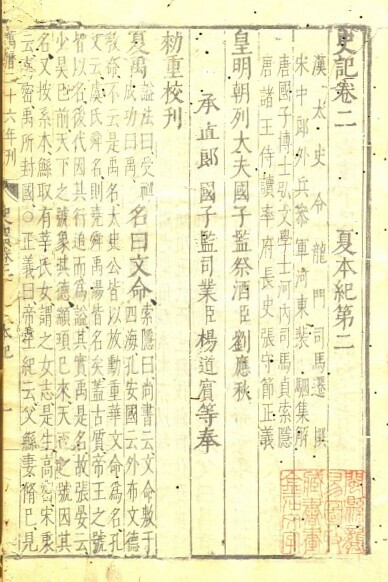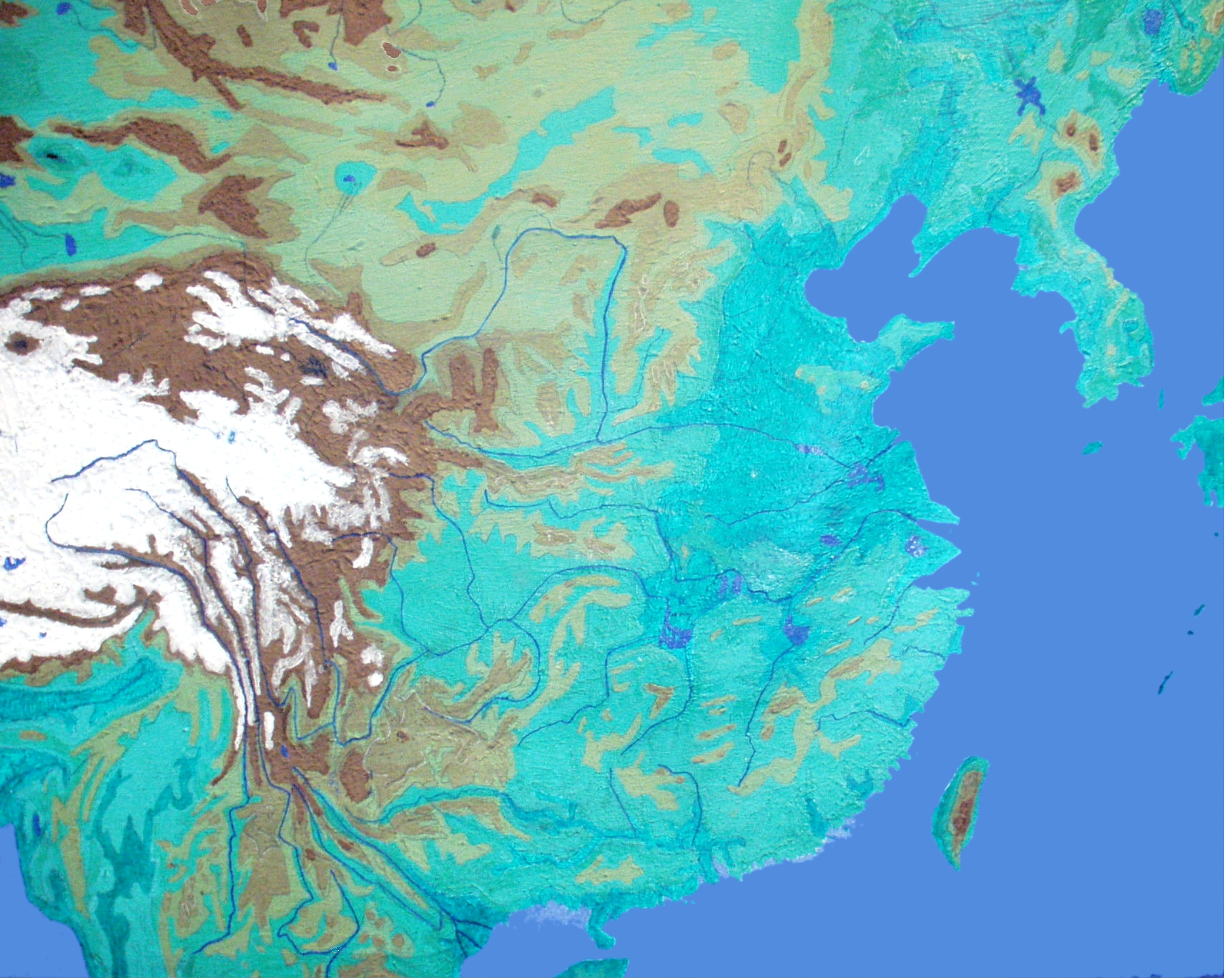|
Shaodian
Shaodian () was the father of Ji Xu Qi (黄帝), he was the ninth great grandfather of the Yellow Emperor, the Yellow Emperor according to the ''Records of the Grand Historian''. He started the Youxiong clan (有熊氏), whilst Shaodian's wives were Fubao and Nüdeng of the Youjiao clan. Fubao later gave birth to Ji Xu Qi (8th great grandfather of Huangdi the Yellow Emperor and :zh:女登, Nüdeng (女登) gave birth to Yandi. According to ''Discourses of the States'', Shaodian was a stepfather of the Yellow Emperor: ::"It was said that Shaodian's wife Fubao gave birth to the Yellow Emperor near the Ji River and the Yan Emperor next to the Jiang River which accounted to their different temperaments. Although Shaodian preceded the Yellow and Yan emperors, he was not their father. the new and improved generational lineage goes from Youxiong to Huangdi the Yellow Emperor 1. You Xiong. 2. Shao Dian 3. Ji Xu Qi 4. Ji Yu Pi 5. Ji Mang Mei 6. Ji Yi Li 7. Ji Bai Jian 8. Ji Jie 9 ... [...More Info...] [...Related Items...] OR: [Wikipedia] [Google] [Baidu] |
Fubao
Fubao (), a woman from the Youjiao clan, was, according to Chinese mythology sources, the mother-in-law of the inventor of silk, Leizu; mother of Huang Di the Yellow Emperor; and, wife of Shaodian. However, the mythological genealogy varies. Fubao is viewed as an ancestress by the Han people who form the majority of the population of China. Daughter-in-law, Leizu Fubao was mother-in-law to Leizu, who was the inventor of sericulture, the art of silk production, according to Chinese mythology. Silk and fabrics made from silk are some of the world's important textiles. Silk is believed to have been produced since Neolithic times in China. The "Silk Road" was named after the trade in silk across Eurasia. Husband, Shaodian Fubao married Shaodian, who according to the Records of the Grand Historian, was the father of Huang Di. Son, Huang Di Fubao was the mother of Huang Di, also called the Yellow Emperor. According to Chinese mythology, the birth was miraculous. Fubao is ... [...More Info...] [...Related Items...] OR: [Wikipedia] [Google] [Baidu] |
Youxiong
The Yellow Emperor, also known as the Yellow Thearch, or Huangdi ( zh, t=黃帝, s=黄帝, first=t) in Chinese, is a mythical Chinese sovereign and culture hero included among the legendary Three Sovereigns and Five Emperors. He is revered as a deity individually or as part of the Five Regions Highest Deities () in Chinese folk religion. Regarded as the initiator of Chinese culture, he is traditionally credited with numerous innovations – including the traditional Chinese calendar, Taoism, wooden houses, boats, carts, the compass needle, "the earliest forms of writing", and ''cuju'', a ball game. Calculated by Jesuit missionaries, as based on various Chinese chronicles, Huangdi's traditional reign dates begin in either 2698 or 2697 BC, spanning one hundred years exactly, later accepted by the twentieth-century promoters of a universal calendar starting with the Yellow Emperor. Huangdi's cult is first attested in the Warring States period, and became prominent late in that ... [...More Info...] [...Related Items...] OR: [Wikipedia] [Google] [Baidu] |
Youjiao Clan
The Youjiao clan (有蟜氏) was a Chinese clan that existed during the Three Sovereigns and Five Emperors period. It is traditionally attributed as the clan of Fubao, who is the mother of the Yellow Emperor. The clan lived in Pingfeng Mountain (平逢山) in Luoyang, and had a bee as their totem for generations in Song County. The earliest record about the clan can be found in the Classic of Mountains and Seas. Pingfeng is an old name of "Mang mountain (邙山)" in the region of Luoyang Luoyang ( zh, s=洛阳, t=洛陽, p=Luòyáng) is a city located in the confluence area of the Luo River and the Yellow River in the west of Henan province, China. Governed as a prefecture-level city, it borders the provincial capital of Zheng ..., Notes {{China-hist-stub Chinese clans Chinese mythology ... [...More Info...] [...Related Items...] OR: [Wikipedia] [Google] [Baidu] |
Lady Hua
Lady Hua () was a figure in Chinese mythology. In the ''Records of the Grand Historian'', Sima Qian's account of the origin of the House of Ying says that she was the wife of Ye the Great Ye or Yeh the Great () was a figure in Chinese mythology. In the ''Records of the Grand Historian'', Sima Qian's account of the origin of the House of Ying made him the son of Lady Xiu and the egg of a black bird. He was said to have been the ... and the mother of Fei the Great, who was later known as Boyi. She is sometimes said to have been the daughter of Shaodian, although her husband and son were very far removed from his generation; it is more likely she was meant as his descendant or the daughter of his people. Women in Chinese mythology Ancient Chinese women Pre-Xia Chinese people {{China-myth-stub ... [...More Info...] [...Related Items...] OR: [Wikipedia] [Google] [Baidu] |
Guoyu (book)
The ''Guoyu'', usually translated as ''Discourses of the States'', is an ancient Chinese text that consists of a collection of speeches attributed to rulers and other men from the Spring and Autumn period (771–476 BC). It comprises a total of 240 speeches, ranging from the reign of King Mu of Zhou () to the execution of the Jin minister Zhibo in 453 BC. Compilation of the ''Guoyu'' probably began during the 5th century and continued until the late 4th century BC. The earliest chapter of the compilation is the ''Discourses of Zhou''. The text's author is unknown, but it is sometimes attributed to Zuo Qiuming, a contemporary of Confucius Confucius (; pinyin: ; ; ), born Kong Qiu (), was a Chinese philosopher of the Spring and Autumn period who is traditionally considered the paragon of Chinese sages. Much of the shared cultural heritage of the Sinosphere originates in the phil ...; although as early as Jin dynasty, Fu Xuan objected to that attrib ... [...More Info...] [...Related Items...] OR: [Wikipedia] [Google] [Baidu] |
Records Of The Grand Historian
The ''Shiji'', also known as ''Records of the Grand Historian'' or ''The Grand Scribe's Records'', is a Chinese historical text that is the first of the Twenty-Four Histories of imperial China. It was written during the late 2nd and early 1st centuries BC by the Han dynasty historian Sima Qian, building upon work begun by his father Sima Tan. The work covers a 2,500-year period from the age of the legendary Yellow Emperor to the reign of Emperor Wu of Han in the author's own time, and describes the world as it was known to the Chinese of the Western Han dynasty. The ''Shiji'' has been called a "foundational text in Chinese civilization". After Confucius and Qin Shi Huang, "Sima Qian was one of the creators of Imperial China, not least because by providing definitive biographies, he virtually created the two earlier figures." The ''Shiji'' set the model for all subsequent dynastic histories of China. In contrast to Western historiographical conventions, the ''Shiji'' does no ... [...More Info...] [...Related Items...] OR: [Wikipedia] [Google] [Baidu] |
Ji River
The Ji River was a former river in north-eastern China which gave its name to the towns of Jiyuan and Jinan. It disappeared during one of the massive Yellow River floods of 1852, as the Yellow River shifted its course from below the Shandong Peninsula to north of it. In the process, it overtook the Ji and assumed its bed. Name ''Jǐ'' is the pinyin romanization of the present-day Mandarin pronunciation of the Chinese name written in traditional characters and in the simplified form used in mainland China. The river's Old Chinese pronunciation has been reconstructed as /* s�əjʔ/ or /*ʔsliːlʔ/. Ancient Chinese accounts also wrote the name with the character ,. and Lin Chuanjia considered this to be identical with the that gave Yuanqu County its name. Geography The Ji River changed its precise course several times over the historical period before its disappearance. Generally, it traced its course from an origin near Jiyuan in what is now Henan Province through Shan ... [...More Info...] [...Related Items...] OR: [Wikipedia] [Google] [Baidu] |


